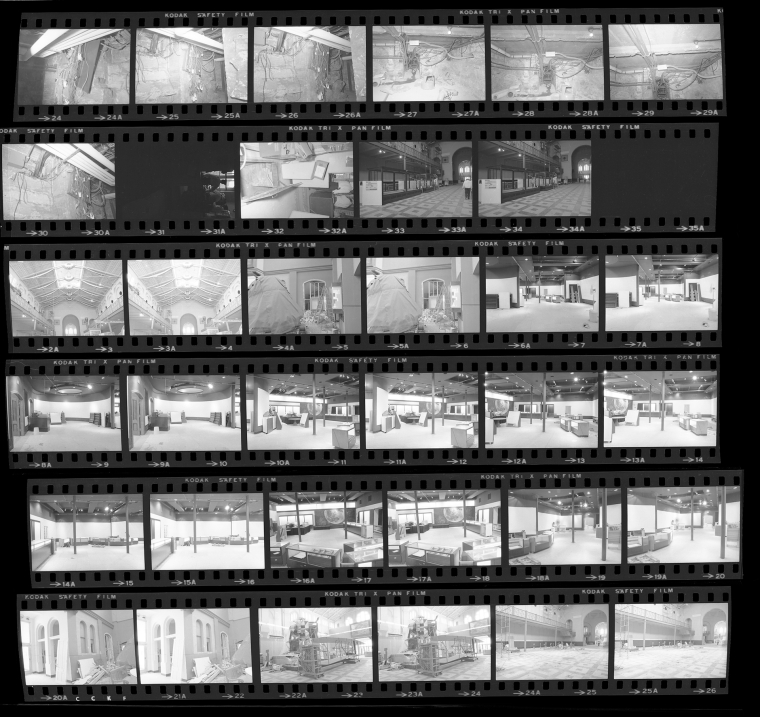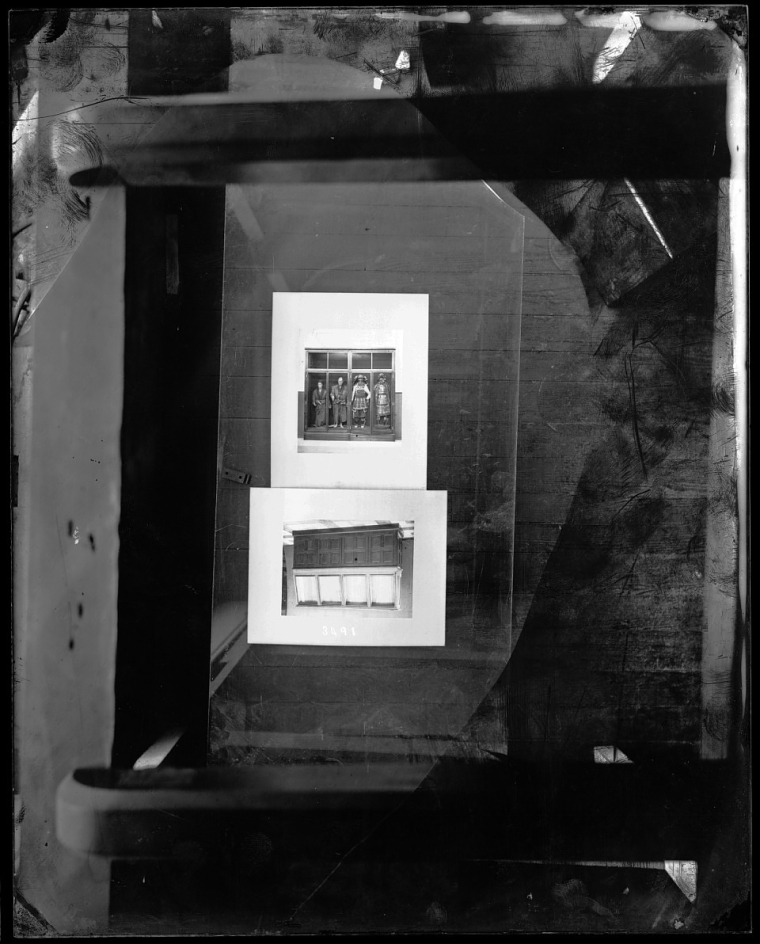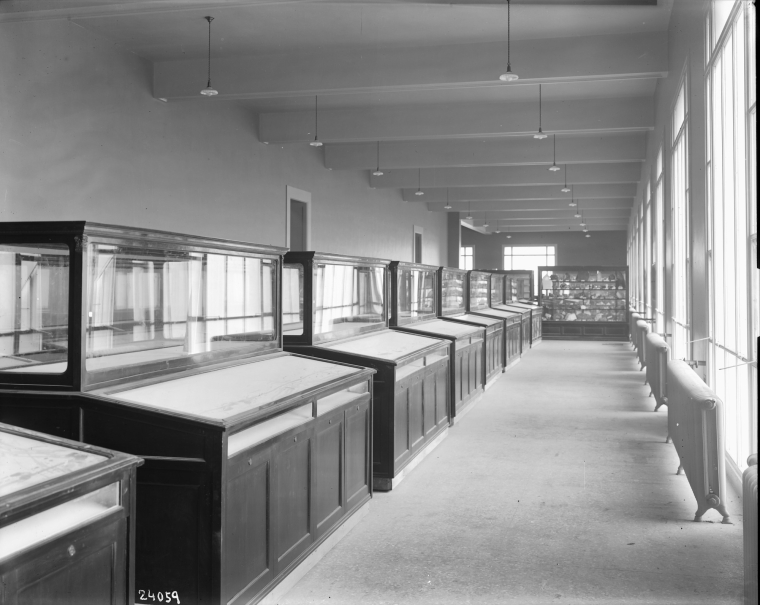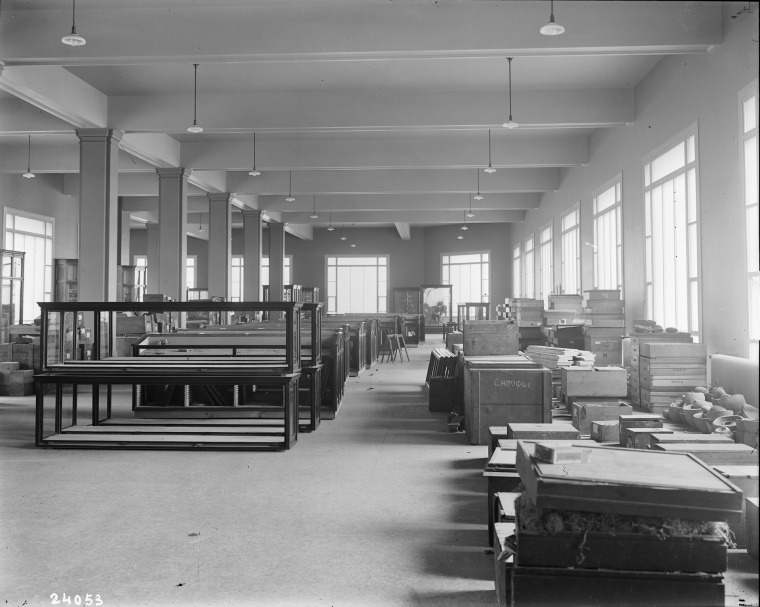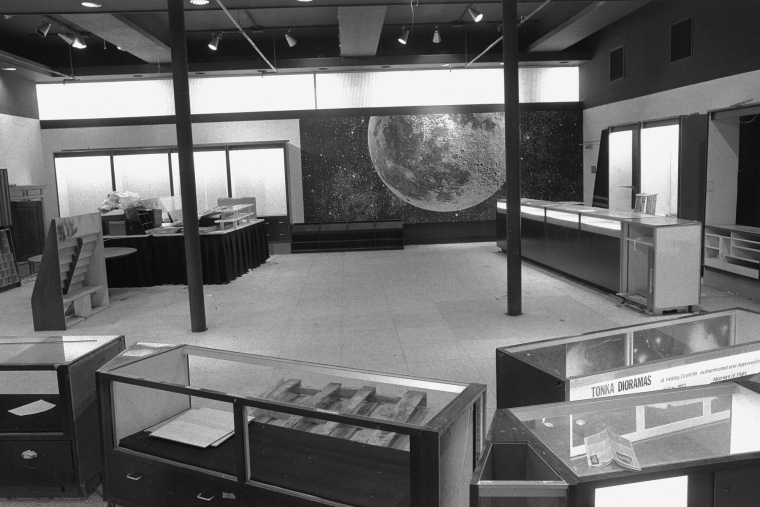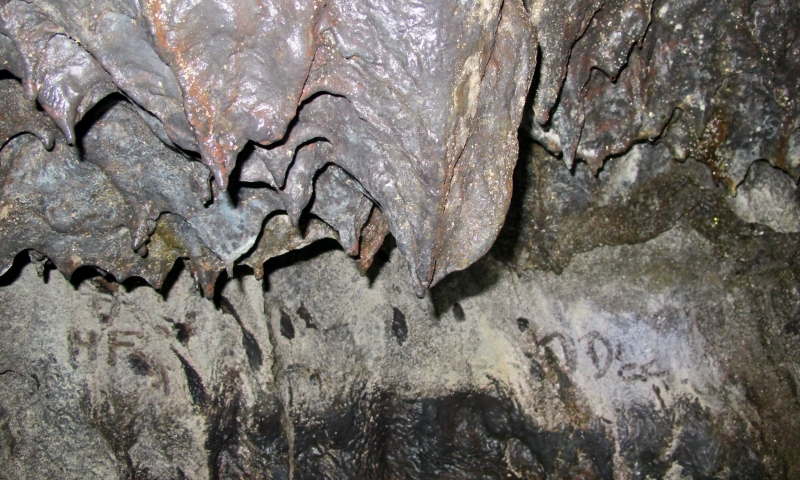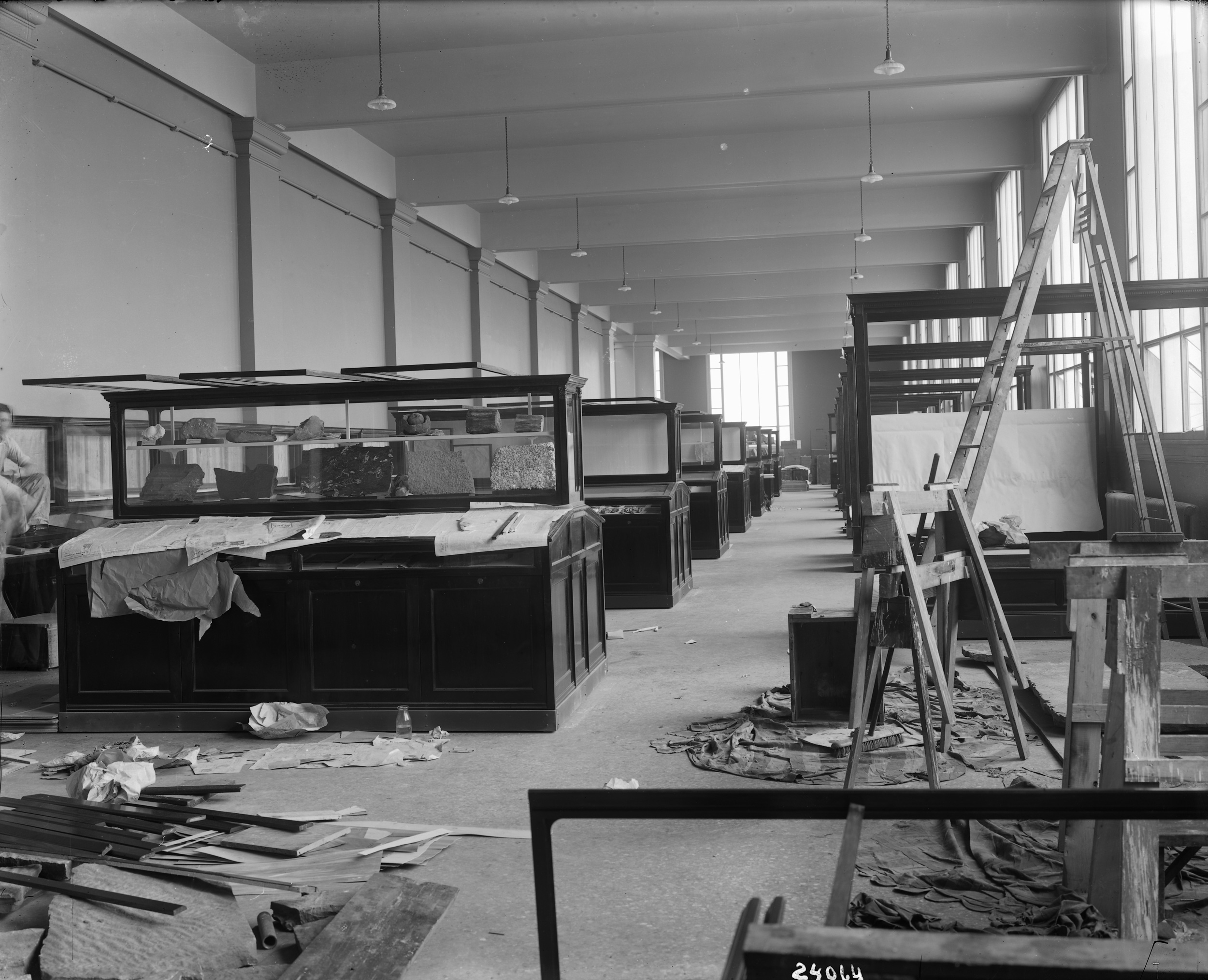
Empty exhibit cases at the United States National Museum, now known as the Arts and Industries Building, 1880s, USA. © Smithsonian Institution Archives. Image # NHB-24064.
To begin writing a text that has as a starting point a personal deconstruction of one’s privileged identity is difficult, especially if focusing on the layers on which that identity has been built and how we can share it. We want to deeply understand where a question, the act of questioning and the act of listening are positioned.
Let’s start with three sentences, by different authors, that accompany us explicitly or implicitly in the content of this essay:
“Perhaps we need a moratorium on saying ‘the body.’ For it’s also possible to abstract ‘the’ body. When I write ‘the body,’ I see nothing in particular. To write ‘my body’ plunges me into lived experience, particularity: I see scars, disfigurements, discolorations, damages, losses, as well as what pleases me.”
— Adrienne Rich, “Notes towards a Politics of Location” in Blood, Bread, and Poetry, 1984
“To use an insult is to cite the past. It only has meaning because it has been used by so many earlier speakers: ‘a dizzying word that rises from the depths of time immemorial,’ as one of Genet’s verses puts it. Yet, for those at whom it is aimed, it also represents a projection into the future: the dreadful presentiment that such words, and the violence they carry, will accompany you for the rest of your days.”
— Didier Eribon, Returning to Reims, 2009
“What we call ‘subjectivity’ is only the scar that, over the multiplicity of all that we could have been, covers the wound of this fracture. It is over this scar that property, family and inheritance were founded. Over this scar, names are written and sexual identities asserted.”
— Paul B. Preciado, An Apartment on Uranus, 2019
Following the power of thought that is awaken by the references above, these take us on a quest—how to think of a collective “us” (abstract body) that becomes particular, being aware that our (inter)subjective dimension has been built over a foundation of scars, sustained by quotes, loaded with mimicry, shaped by social history that erases and forgets, or rather, that used the argument of silencing (argumentum ex silentio), sustained by the gaze of perception politics current in each era, and let’s start there…
We know that each era can only deal with what it can recognise and the argument of silencing—a tool used to justify what can or cannot remain as historical fact, as artefact, as archive, as culture, to be taken care of and remembered as something that happened—erased cultures, people, facts and artefacts. Their existence was denied and downgraded because not enough of them were established to declare the existence of something.
Each era decided to cover up what it didn’t want to recognise. By putting the finger in the wound, it is as if they wanted to hide from their own behaviour? In the non-existence of the Other as a category – legal, political and also, aesthetic – made the transgressions committed easier to bear, because this way, they are non-existent?
Based on this premise, our Western culture gradually built its domination, covering and denigrating the Other, finding domination mechanisms associated with science to justify, for instance, that bodies of certain races, genders and sexualities would be superior to others, with complete access to the polis, while others seen as second or third rate, have their full and political access denied.
The consequence was, and this is the basis upon which our visual consumption was and is built, the dissemination of hegemonic behaviours and the importance given to the patriarchal structure, influencing our individual and collective histories along the years, forming an acritical and passive observer/consumer. Unfortunately, our museums are built over these layers. They are cemeteries that hide silent arguments, because they show in a deceptive manner all human race, seen and chosen through the sustaining of whiteness and the withdrawal of the narrative power of other bodies.
I wrote and rewrote many times the beginning of this text, due to being so used to the majestic “we” of Western culture, comfortable, because by using “we” we speak for all, without differentiation. By going deeper in the questions raised above in this essay, in who is really this “we”, there is nothing better than to go back to the moment we became aware that our body has a specific placement. This means that we think about that location, just as Adrienne Rich states: we are bodies that go beyond a specific marked place on a map. To be aware of my body is to know which history and privileges of gender, colour, and religion it carries, if it has erased others or been erased, if it has inflicted suffering or is carrying scars.
All that we have taken in till that moment, until the moment we acknowledge that engaged body, is seen through new and deconstructed filters, and we wonder how we didn’t notice. How? In fact, we only see what we know and each era only works with what it can see or with what it allows to be seen… there is no turning back, the suppressed layers have already exploded and started taking their place, that had been denied by a predominance of territorial and colonial power, that was at the basis of the creation of the category of whiteness. We have never left the cavern, we live in a system that perpetuates the illusion of truth. We live in and for doxa.
How do we, white women, position ourselves after having access to these words:
“Most white women regarded black women who were the objects of their husbands’ sexual assaults with hostility and rage. Having been taught by religious teachings that women were inherently sexual temptresses, mistresses often believed that the enslaved black woman was the culprit and their husbands the innocent victims. (...) White women held black slave women responsible for rape because they had been socialized by 19th century sexual morality to regard woman as sexual temptress. This same sexual morality was adopted by slaves.”
— bell hooks, Ain't I a Woman: Black Women and Feminism, 1981
“As far back as slavery, white people established a social hierarchy based on race and sex that ranked white men first, white women second, though sometimes equal to black men, who are ranked third, and black women last.”
— bell hooks, Ain't I a Woman: Black Women and Feminism, 1981
“Generally, it is said that we don’t think about a woman within herself but in comparison to men […]. The French intellectual [Simone de Beauvoir] shows […] on the subject of gender, that a woman is not defined within herself, but in relation to man and through the gaze of men. A gaze that restricts her to a role of submission, which carries hierarchical meanings (→ 1). [...] If for Simone de Beauvoir, a woman is the Other because there is no reciprocity in the male gaze, for Grada Kilomba the black woman is the Other of the Other, a position that places her in a more difficult place for reciprocation.”
— Djamila Ribeiro, Lugar de Fala (Feminismos Plurais): São Paulo, 2019
These scars unveiled by the Other, that we kept denigrating, did not go through our school manuals nor through the glorification of an individual and collective culture and identity. We were building ourselves over these scars, which were buried deep by mimetic behaviours of superiority.
Fortunately, the argument of silencing didn’t erase female authors and books whose pages are constant punches to the gut, or more accurately, assaults on our sensibilities, on our aesthetic, historical, and metaphorical systems, that have been built around instituted and taught narratives. Those books take down the imaginary castle erected by our reality, not because they narrate fabricated stories but because they bring to the surface facts we were socially unaware of, due to our ignorance or due to the fact we never had the courage to ask, to question the historical game’s data and because we were impregnated in the mesh of silence.
The subaltern is denied any ambiguity of behaviour, and is only assigned a morally immaculate conduct, and when they ask a question, it is taken as an exaggeration and their pain devalued.
Now reaching this point in the essay, the only thing we have left is to ponder about what it is to ask a question, what has the question and it’s positioning to do with everything that has been said till now? What can a question do? Why is it, that sometimes the one being questioned violently repels the question?
-
(1) As an example and to illustrate this idea we suggest reading John Berger’s Ways of Seeing.
A question is already the act of thinking, of giving shape to thinking and it puts us in a vulnerable and uncomfortable position before what we know or what we believe we know. The question presupposes an ontological stance that might want to break with existing dominant ontologies(→ 2), questioning beliefs, the so-called epistemological protocols of truth. The question is active and passive at the same time, it awaits a reaction, and it is in the movement of speak-listen-speak.
In the era of the decolonisation of thought, its placement recognises the necessity to dismantle, to subvert the scales of hierarchy. And, that placement, which exists in a network of tension of discursive power, starts off (or it should) with a body, of a subject positioned geographically, culturally, sociologically, and politically in a symbolic morphology.
The symbolic representation that a question carries should position reality in a process of dissension, establishing a place of discomfort, where tensions create synergies that make us question our position. As Wayne Modest says, we should sit in the place of discomfort, we should question our place and the legacy of the historical DNA of society.
The “I”, when it places its voice, it places it based on their experience with a body to which its historical existence has been denied, moving it to the margins of society. This question comes up in the rebellious one, in the Camusian sense – “up to this point yes, beyond it no,” (Albert Camus, The Rebel, 1951); therefore setting a border. About borders there is a lot to say. In this sense, a border is the emancipation of the “no”, which defines its limits, releases it and makes it autonomous. As Camus said, “his no affirms the existence of a borderline”, understood here as limit and harmony within itself.
This is one of the characteristics of rebellion that sometimes takes the question to a poorly worked out inner self, only built on one side, denying the Other their constitution and power to locate themselves. And is it the fact that the question is badly asked (from a hegemonic point of view), or is it that the receiver is not available to be questioned?
The question is born from the unrest, it has as a basis an individual that carries around his personal experiences and therefore, his positioning and placement: how do we enunciate and from where do we enunciate, where is their body placed? Most of the time, it is located in spatial systems that relate to the oppression of non-normative bodies, scarred because of the maintenance of a historical supremacy.
In the space between the question and the answer there is a place of listening that has its dichotomy in the place of speech. In the place of speech, there is an area of enormous importance: the place of listening, which should be active and unifying. But what is this place of listening, how do we generate it? Which layers hovering in that space, which is also a place of physical, social, and political stance.
This place has two directions, whereas the place of speech, given its characteristics, has only one, but the act of talking needs to already be an act of listening, because whoever is, or think they are, in the place of listening, sometimes doesn’t realise that they must stop talking or at least tone it down, so that other voices that haven’t been heard before, can be heard. This listening is not a linear and simple process, it’s enveloped in complexities and discordances that take time to process, to change, and to integrate in new software of behaviour.
When speaking there are sometimes uncomfortable questions that might want, before a quick answer, to leave the seed of deep questioning, whether individually or socially. But because individuals in the place of listening were in the place of speech/verbiage before, for a great lump of historical time or since always, the question is interpreted as a bomb, a dismantling – and it is.
The question brings a defensive reaction, an attack to the point of interrogation, and a rejection of the possible layers that that question might bring and expose. A question is never only just a question, it doesn’t rise from nothing, and it has a whole social-political-economical history. Listening doesn’t take us to mere silence, it is an internal whirlwind of possible reactions, of possible vanishing points for an answer that is never satisfying, not for us nor for the other.
Who is asking and what is being asked, exposes the relationships of power. This way, having been in the opposite role before the one being questioned now sees it as their power being stripped away – but they took the power from the ones they made subordinate – not understanding that they are different powers: one is born in the middle of the subalterns, the other in the middle of the power that has been established in the protocols of truth, and that has legitimised itself.
The power attributed to the subordinate is accumulative without being linear, which is to say, its accumulation is historical and not individual (the sum of individualities). Even though its starting point is individualities, these are deep layers that pass from generation to generation and that at present have to rise and occupy the place that is rightfully theirs in the history of society. For the hegemonic one, their place of speech has an individual character (from themselves to themselves, autophagic discursive power relationships even with the ones they consider equals), while the Other and their place of speech is imminently collective, from themselves to others.
We purposefully end this text with a question, not to look for an answer but to problematise it. Because it’s not in the answer that the answer, the finish line, can be found. Rather, it is in the process of placing the interrogation that leads to the unblocking of the action: belonging to a hegemonic regime, what is the question that we should ask to dismantle the tools that the system we belong to built to oppress, hurt and quote repeatedly the epistemological protocols of truth? stioned violently repels the question?
-
(2) Is this what Western culture is afraid of?
Maribel Mendes Sobreira is an architect, curator and researcher, a PhD student in Philosophy at the School of Arts and Humanities (Faculdade de Letras) of the University of Lisbon (FLUL) in Aesthetics and Philosophy of Art, and she was an FCT (Foundation for Science and Technology) grant holder from 2016 to 2020. She holds a Master's degree in Philosophy from FLUL, she is also a PhD student in Philosophy at FLUL in the field of Aesthetics and Philosophy of Art, and was an FCT scholarship holder from 2016 to 2020. Sobreira is a member of the Philosophy Centre of the University of Lisbon (CFUL) and of ISPA (International Society for the Philosophy of Architecture). She designs and runs activities to raise awareness of the arts and architecture, collaborating with Museu Coleção Berardo and maat at that level. She started her curatorial practice in 2019, with the project ARQUIVO EXQUIS, in Lisbon, and she co-founded ColectivoFACA – a curatorship and active citizenship project that questions the narratives of visual culture, not erasing history and intersecting the various narratives. She has published articles on architecture, urban heritage and art theory, noting, in particular: “Relation of Architecture and Philosophy in the tragedy of culture” (2018) and “Time of the shapeless” (2020).
“Empty Exhibit Cases” gathers three cisgender white women working in the arts, Susana Pomba, Susana Gaudêncio and Maribel Mendes Sobreira, on their way to become life-long anti-racist and effective allies, as artists, teachers, researchers, curators, historians, writers, or authors. The project delivers a group of essays (in diary mode), that might be hybrid in form, and attempt to dissect various questions and struggles, all in the context of the daily personal and professional lives of the three participants. They will also engage in conversation with activist groups, scholars, or cultural agents.
Based on diary-keeping as a form of writing, the Mode Diaries initiative creates a field of interpretative potentialities within the context of maat Mode 2020, a public, experimental and participatory exhibition and activity programme under the motto “Prototyping the museum”. This is the scope that justifies and enables the twisting of the meaning commonly attributed to the term “diary” by transforming what’s individualised into collective, private into public, singular into plural, etc.


